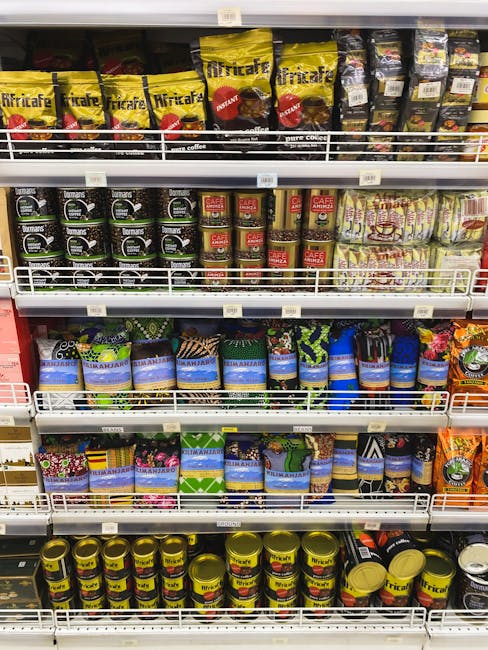The Alluring World of Coffee Flavors: A Guide to Exploring Your Taste Buds
Coffee, a beloved beverage millions enjoy worldwide, is far more than a caffeine fix. It’s a complex and nuanced world of flavors, aromas, and textures waiting to be discovered. Each cup offers a unique sensory experience influenced by bean origin, roasting techniques, and brewing methods. Imagine the journey of a coffee bean, from its humble beginnings in the fertile soil of a tropical region to its transformation into the aromatic brew we savor. This journey, shaped by climate, altitude, and even the specific variety of coffee plants, is crucial in shaping the final flavor profile.
Think of the diverse landscapes where coffee thrives – from the sun-drenched slopes of Ethiopia to the lush rainforests of Brazil. Each region boasts unique soil compositions and microclimates, contributing to the distinctive character of its coffee beans. This is why you might find notes of bright citrus and floral aromas in an Ethiopian Yirgacheffe, while a Brazilian Santos might offer a rich, chocolatey depth. Roasting, transforming green coffee beans into their familiar brown state, further accentuates these inherent flavor profiles. With its varying temperatures and durations, the roasting process can bring out specific flavor notes, ranging from sweet and nutty to smoky and earthy.
Beyond bean origin and roasting, the brewing method also plays a significant role in shaping the final taste of your coffee. From the classic drip coffee maker to the more sophisticated pour-over techniques, each method extracts different compounds from the coffee grounds, resulting in varying bitterness, acidity, and body levels. Even the type of water used can influence the taste, with hard water often leading to a more bitter cup. This intricate interplay of factors makes coffee a fascinating subject for exploration, offering endless possibilities for discovering new and exciting flavor combinations.
This article guides understanding the diverse range of coffee flavors, from the classic notes of chocolate and caramel to the more exotic hints of fruit and spice. We’ll explore the science behind coffee taste, exploring the complex chemical compounds contributing to its unique aroma and flavor profile. We’ll also explore various flavor profiles, providing examples of specific coffees known for their distinct characteristics. Furthermore, we’ll offer tips for maximizing your coffee experience, from choosing the right beans and brewing method to understanding the nuances of tasting and appreciating the subtle complexities of this beloved beverage.
Whether you’re a seasoned coffee enthusiast or just starting your journey, this exploration will empower you to appreciate coffee’s full spectrum of flavors. From the invigorating burst of citrus in a Kenyan coffee to the smooth, velvety richness of a Sumatran Mandheling, a world of coffee awaits discovery. So, grab your favorite mug, take a deep breath, and embark on this flavor journey with us.
The Science Behind Coffee Flavor
The flavor of coffee is a complex symphony orchestrated by many factors, starting with the coffee bean itself. Like a unique musical instrument, each bean has a unique chemical composition influencing its flavor profile. This composition is shaped by various factors, including the bean’s origin, altitude, and soil conditions. Imagine the difference between a rich, dark chocolate from a volcanic region and a bright, citrusy bean grown on a high-altitude mountainside. Each environment imparts its unique fingerprint on the bean’s flavor.
Like a skilled conductor, roasting plays a crucial role in developing and intensifying coffee flavors. Heat transforms the chemical compounds in the bean, creating new aromas and tastes. It’s like a chemical orchestra, where heat acts as the conductor, bringing out different notes and harmonies. Different roasting levels influence the resulting flavor profile, from light to dark. For instance, light roasts, like a gentle melody, emphasize the bean’s natural acidity and floral notes, while dark roasts, with their bold, deep tones, bring out bolder flavors like chocolate and nuts. The roasting process is a delicate balance, where the roaster must carefully control the heat and time to achieve the desired flavor profile.
Finally, the brewing method significantly impacts the taste of coffee. Different brewing methods extract coffee’s components in varying amounts, leading to diverse flavor profiles. Think of it like a skilled chef using various techniques to extract the essence of a particular ingredient. A French press, for example, extracts more oils, resulting in a richer, more full-bodied cup, much like a slow-cooked stew. On the other hand, a pour-over emphasizes clarity and distinct flavors, like a delicate, precisely prepared dish. The choice of brewing method allows you to fine-tune the flavor experience, much like a musician choosing the right instrument for a specific piece.
Common Coffee Flavor Profiles
The world of coffee flavors is vast and diverse, with numerous distinct profiles emerging. Understanding these profiles can help you find coffees that align with your taste preferences. It’s like exploring a culinary map, where each region offers a unique flavor experience.
Fruity and Floral:
Coffees from regions like Ethiopia and Kenya are known for their bright acidity and delicate floral notes. They often exhibit flavors of berries, citrus fruits, and jasmine. Imagine a vibrant fruit salad with a touch of floral perfume. The light to medium roasts enhance these characteristics, like a gentle breeze carrying the scent of a blooming garden.
Chocolate and Nutty:
Indonesian and Brazilian coffees are renowned for their rich, full-bodied flavors. They often showcase dark chocolate, nuts, and caramel notes with a smooth and slightly sweet finish. These beans are typically roasted to a medium to dark level, creating a deep, satisfying flavor profile, like a decadent dessert.
Spicy and Earthy:
Coffees from South America and Africa often have an earthy, spicy flavor profile. They may exhibit notes of pepper, cinnamon, and even a hint of tobacco. The roasting level can range from light to medium, depending on the desired intensity. Imagine a warm, comforting blend of spices, like a chai latte.
Exploring Your Coffee Palate
The best way to discover your preferred coffee flavors is through exploration. Experiment with different origins, roasts, and brewing methods. Note the flavors you enjoy and be open to trying new things. You may be surprised by the fascinating world of coffee flavors waiting to be explored. It’s like embarking on a culinary adventure, where each sip is a discovery.
Here are some tips for enhancing your coffee-tasting experience:
1. **Start with a clean palate:** Avoid eating strongly flavored foods or drinks before your coffee tasting session. This allows your taste buds to perceive the subtle nuances of the coffee like a blank canvas ready to receive a masterpiece.
2. **Focus on aroma:** Before taking a sip, inhale the fragrance of your coffee. This will give you a first impression of the flavor profile, like a sneak peek at the curtain before the show begins.
3. **Take small sips:** Swirl the coffee in your mouth and allow it to coat your tongue. This will help you identify the flavor notes, like a conductor guiding the orchestra through different melodies.
4. **Pay attention to the finish:** Notice the lingering flavors after you swallow. This is an essential part of the coffee experience, like the final chord of a beautiful song.
5. **Record your observations:** Keep a journal of your coffee tastings, noting the origin, roast level, brewing method, and personal impressions. This will help you track your preferences and explore new possibilities, like a map guiding you through a vast and exciting landscape.
The world of coffee flavors is a captivating and ever-evolving journey. As you explore different origins, roasts, and brewing methods, you’ll discover a spectrum of tastes and aromas that will elevate your appreciation for this beloved beverage. Imagine the vibrant acidity of a Kenyan coffee, bursting with notes of citrus and berries, contrasting with the earthy, chocolatey depth of a Sumatran brew. Each cup offers a unique sensory experience, inviting you to embark on a flavor adventure with every sip.
This exploration goes beyond simply identifying flavors. It’s about understanding the nuances that contribute to the overall taste profile. The roast level plays a crucial role, with lighter roasts showcasing delicate floral and fruity notes, while darker roasts bring out bolder, roasted flavors like chocolate and nuts. The brewing method also influences the final taste, with pour-over methods emphasizing clarity and brightness, while espresso extraction yields a concentrated, intense experience.
Remember, your palate is your guide. Don’t be afraid to experiment and discover your preferences. Some may gravitate towards the bright acidity of Ethiopian Yirgacheffe, while others might find solace in the smooth, full-bodied richness of Brazilian coffee. There’s no right or wrong answer, only a journey of personal discovery.
The beauty of coffee lies in its versatility and the endless possibilities. Whether you’re a seasoned coffee connoisseur or just starting your exploration, the world of coffee flavors awaits. Embrace the journey, savor the complexity, and let each cup transport you to a new and exciting destination.

Photo by Dmitry Limonov on Pexels






